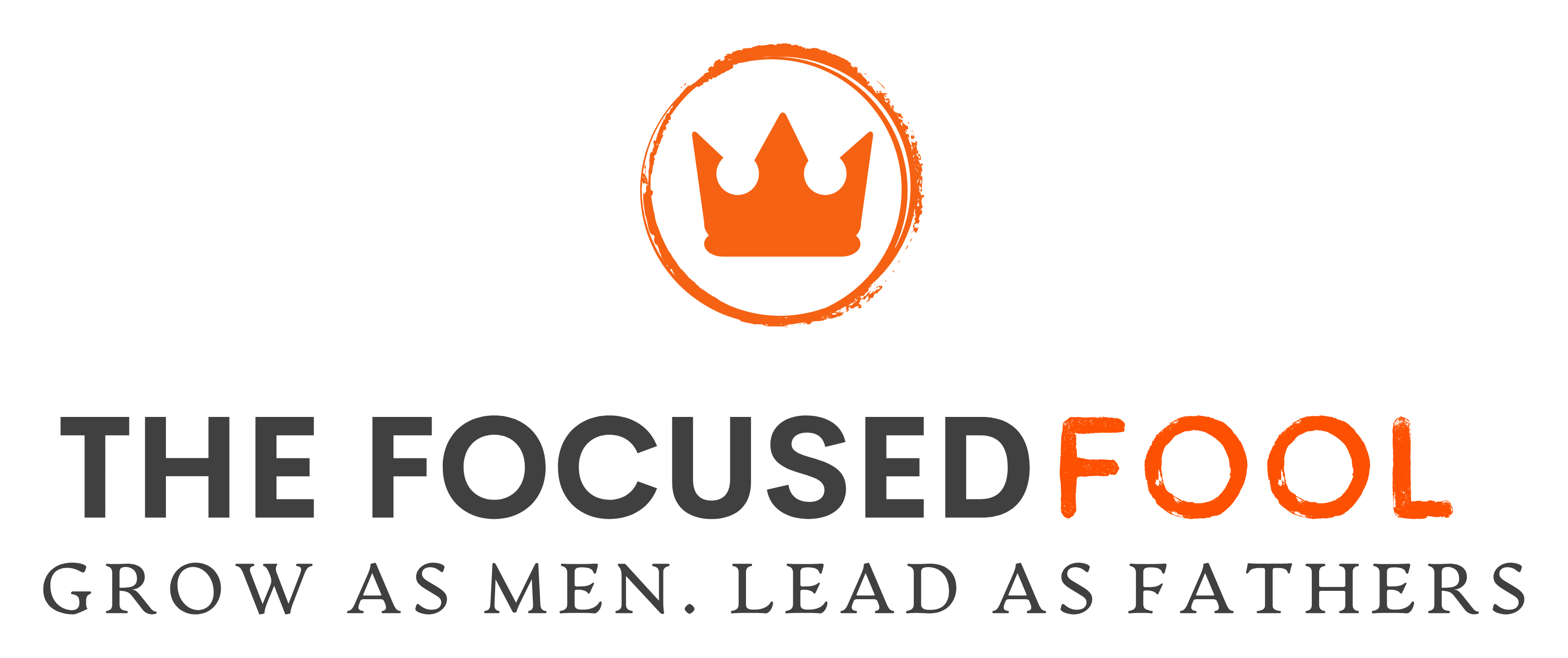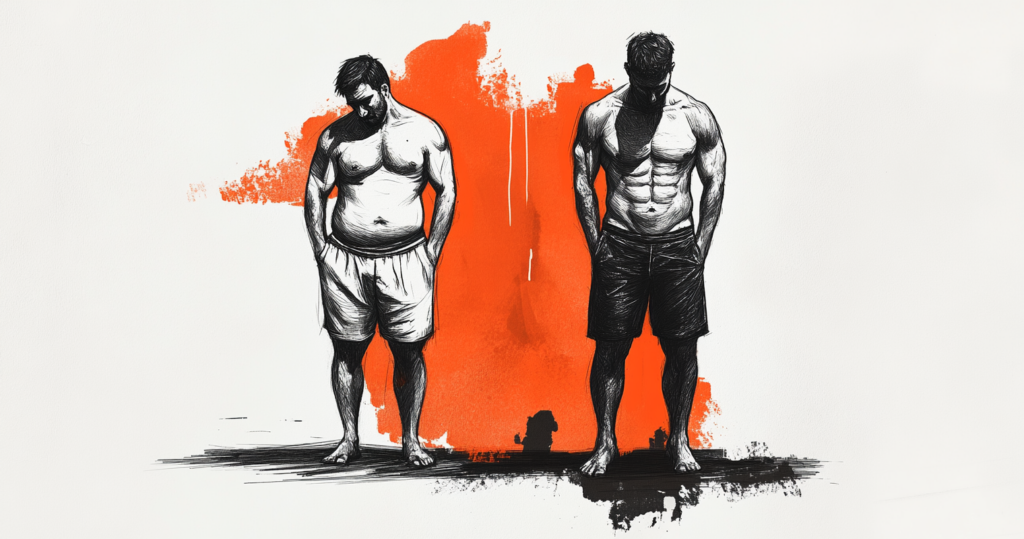A dad’s honest look at testosterone, shortcuts, and the uncomfortable questions behind our quest for more.
I. The Confession
I want to do steroids.
There. I said it. Let that sit for a second.
Not because I’m trying to become the next Mr. Olympia or bench press a Honda Civic. I want to do steroids because I’m tired. Bone-deep, soul-crushing tired. The kind of tired that makes you wonder if this is just what 48 feels like, or if there’s something fundamentally broken under the hood.
I wake up foggy. I drag through the afternoon. By evening, when my kids need their dad to show up, really show up, I’m running on fumes, caffeine prayers, and the faint hope that bedtime is closer than I think.
Meanwhile, three of my buddies started TRT last year, and they’re walking around like they discovered the fountain of youth mixed with a double espresso.
So yeah, that quiet little voice keeps whispering.
Am I missing out by trying to do this the “hard” way?
What if there’s a better version of me just one prescription away?
II. The Cultural Moment: Testosterone Everywhere
We’re living through a testosterone gold rush, and everyone’s staking their claim.
TRT clinics are popping up faster than Starbucks in the early 2000s. Your Instagram feed is probably flooded with 45-year-old dads who look like they could deadlift a refrigerator while giving a TED talk titled “How Cold Showers and Liver Changed My Life.” Low-T ads have become the new hair loss commercials, targeting that sweet spot where male insecurity meets disposable income.
“Feeling tired? Low energy? Can’t keep up with your kids?”
The ads don’t say you’re broken, but they sure make it sound like you might be. They’ve turned normal human fatigue into a medical condition that needs fixing.
And honestly, it’s working.
Even decent, thoughtful men start wondering:
Am I broken, or just average?
And in a culture that treats “average” like failure, that’s a terrifying question to sit with.
III. My Story: Down the Rabbit Hole
Three of my friends started their TRT journey within six months of each other. Coincidence? Probably not. We’re all in that magical age bracket where your body starts leaving passive-aggressive Post-it notes like:
“Remember knees?”
“How’s that third cup of coffee working for your liver?”
But here’s the thing. They looked great. Better than great. They had energy, focus, and that confidence that comes from feeling like you’re operating at full capacity instead of running on backup power.
So I started paying attention to my own warning signs:
- Brain fog that made simple decisions feel like advanced calculus
- Fatigue that wasn’t just physical. It was emotional
- The creeping suspicion that this might be the beginning of some inevitable decline
I wasn’t just curious. I was tempted. I seriously considered TRT. Not just in passing. I dug into protocols, read Reddit threads, even researched low-dose steroids. I wasn’t just chasing energy and focus. I was also chasing vanity. I wanted to feel sharp again. And yes, I wanted to look sharp too.
That’s when I decided to get real data. I signed up for Life Force Diagnostics, one of those concierge health services that promises to “optimize your biology” (because apparently, regular doctors just help you survive, but these guys help you thrive). Life Force isn’t one of those aggressive pop-up clinics that puts everyone on a needle on day one. Yes, they offer TRT. But they also offer alternatives. They ask how fast you want to see results. They meet you where you are.
If my testosterone had come back really low, I was open to it. I was ready to have that conversation. But I wanted to see what was actually going on first.
I’m glad I did. I’m glad I took the slow approach. Because when the results came in, I found out I wasn’t tanked. My levels were on the higher end of normal. And even better, when I made a few intentional changes, they climbed even higher.
It told me something.
Maybe I wasn’t broken.
Maybe I was just out of alignment.
And maybe I didn’t need a prescription to feel like myself again.
🧪 Testosterone Reference
Clinical Low T: Below 300 ng/dL
Standard Healthy Range: 300–1000 ng/dL
My First Test: 702 ng/dL
After Tongkat Ali & DHEA: 882 ng/dL
Note: Many TRT clinics will prescribe testosterone even if you’re above 300, aiming to push you toward what they consider the “optimal” end of the range, typically between 800 and 1000 ng/dL.
The blood panel came back with a testosterone level of 702 ng/dL. High side of normal. Most doctors would’ve patted me on the head and told me to get more sleep. But I still felt like garbage. So what gives?
Life Force recommended some natural support: Tongkat Ali and DHEA. Not exactly steroids, but not exactly doing nothing either. After a few months, I retested at 882 ng/dL. My energy was better. Focus slightly improved.
But it wasn’t a silver bullet. Because here’s what I was slowly learning.
Hormones aren’t the whole story.
Sometimes, they’re not even the main story.
IV. The Easy Answer Is the Most Tempting One
Here’s the uncomfortable truth. It’s way easier to optimize than to overhaul.
We love simple fixes. Pills, patches, injections. Something that requires minimal disruption to our existing chaos.
What we often don’t want to do is the boring, unglamorous work that actually moves the needle:
- Fixing our diet instead of grabbing whatever’s convenient
- Lifting consistently instead of sporadically
- Cutting back on alcohol instead of using it as our nightly reset button
- Actually sleeping seven-plus hours instead of wearing sleep deprivation like a badge of honor
- Addressing emotional stress instead of medicating the symptoms
But that’s where real change happens.
In the daily discipline of doing things that don’t feel revolutionary in the moment but compound over time.
I realized I was looking for a pharmaceutical solution to a lifestyle problem. And that’s like trying to fix a leaky roof with better paint.
V. The Bigger Question: What Am I Really Trying to Solve?
Even if I could fix everything with a prescription, there’s a deeper question lurking underneath all of this optimization talk.
TRT promises strength, energy, focus, libido.
All the things that sound like they’d make you a better man.
But here’s the question that stopped me cold.
Better for what?
Are you trying to look good shirtless at 45?
Perform better in the gym?
Have more energy for work?
Or are you trying to show up fully present for your kids when they need you most?
If you don’t know what you’re actually chasing, you’ll never stop chasing it. You’ll just keep moving the goalposts and looking for the next optimization.
I had to sit with the possibility that what I really needed wasn’t higher testosterone.
I needed discipline, rest, and consistency.
I needed to stop outsourcing my energy to shortcuts and start building it from the ground up.
That’s harder than a weekly injection. But it’s also more honest.
VI. What I’d Tell Another Dad
Look, TRT isn’t evil. For some guys, it’s genuinely necessary. A tool that helps them reclaim their lives. I’m not here to shame anyone who’s found real benefit from it.
But here’s what I learned about the industry.
TRT clinics will absolutely do bloodwork. They’re not reckless.
But they’re also businesses, and their business model often involves pushing guys to the upper limits of “normal” testosterone, even if you’re not clinically low.
You walk in tired with a 400 ng/dL level, which is technically normal, and you’ll likely walk out with a prescription to get you to 900-plus.
If you haven’t done the foundational work, don’t skip straight to the prescription pad.
Start with bloodwork so you’re working with actual data, not just feelings.
Then get brutally honest about your lifestyle:
- Are you sleeping enough?
- Eating real food?
- Moving your body regularly?
- Managing stress in healthy ways?
And most importantly, ask yourself this:
Am I trying to fix my levels, or escape my habits?
Because if it’s the latter, no amount of testosterone is going to solve the deeper problem.
You’ll just be a more energetic procrastinator with a better bench press.
Own your sleep. Own your stress. Own your choices.
Own the fact that showing up for your family requires more than just good blood work.
And if, after all that honest work, you still need medical intervention?
Then you’ll be making that decision from a place of strength, not desperation.
That’s what I had to ask myself. After the research, the bloodwork, the low moments, the temptation. Was I ready to hand over my health, or take responsibility for it?
I’m glad I waited.
I’m glad I tried to fix the foundation first.
Because when my energy started to return, it didn’t just feel better.
It felt earned.
Because maybe the real hormone crisis isn’t low testosterone.
Maybe it’s low ownership.
The Focused Fool Newsletter – Growing As Men. Leading As Fathers.


Leave a Reply